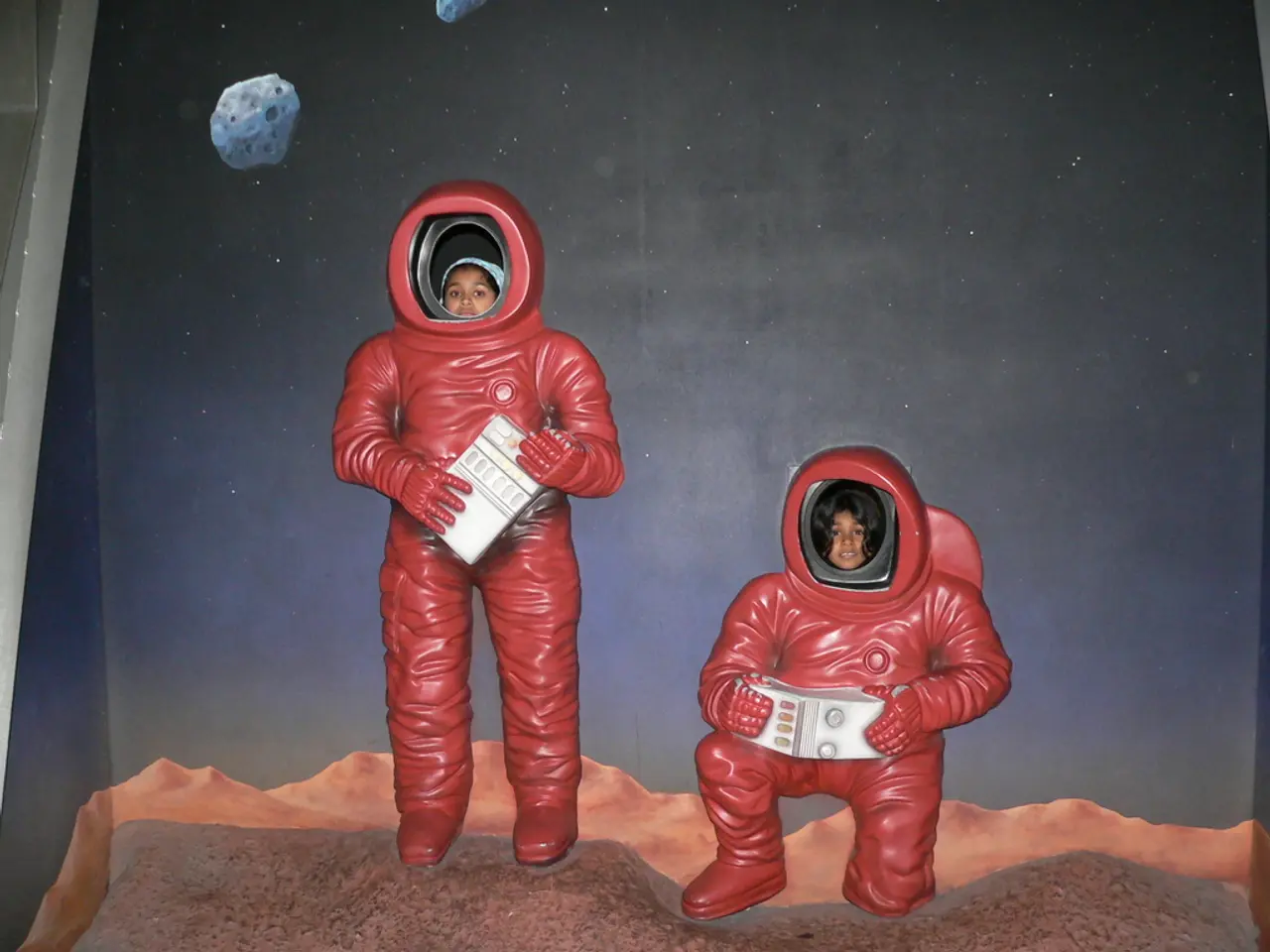Deep Space Missions Could Benefit from Hibernation: Exploring the Advantages of Hibernating for a Long Space Journey, Akin to a Hamster's Sleep Pattern
Revolutionary Hibernation Technology for Space Travel and Beyond
In a groundbreaking development, scientists and space agencies are exploring the possibility of using human hibernation for long-duration space missions, particularly those to Mars. This innovative approach, known as synthetic hibernation, aims to conserve resources, protect astronaut health, and address the logistical challenges of extended space travel.
Synthetic hibernation is a medically induced, reversible torpor state that significantly reduces an organism's metabolic rate and energy consumption. The state can be achieved by using targeted neural circuits and medications to suppress metabolism, mimicking the natural hypometabolic state animals enter to survive harsh conditions.
Dr. John Bradford, chief executive of SpaceWorks Enterprises, is among those who believe in the potential of human hibernation. His research suggests that it is possible to develop the technology for human hibernation, as seen in movies. If successful, this could revolutionize health care on Earth, with potential benefits in controlling metabolism for specific therapies and reducing intensive care degeneration and deconditioning effects.
For space travel, synthetic hibernation could offer several advantages. By reducing astronauts’ metabolic rates and energy needs, it could conserve vital resources like food, water, and oxygen during lengthy journeys in space. It could also mitigate the adverse physiological effects of prolonged weightlessness and radiation exposure, minimize psychological challenges associated with long isolation, and make spacecraft design more efficient.
Missions to Mars, which typically span several months, could particularly benefit from synthetic hibernation. By dramatically improving astronaut health and mission sustainability over such durations, it could transform mission planning and feasibility.
While synthetic torpor has shown promise in preclinical animal models, safe and reversible induction in humans has not yet been realized. The challenge lies in finding the right drug combination to temporarily lower the body’s thermal set point. Researchers in Europe and the US are working tirelessly to develop reliable synthetic hibernation methods suitable for medical applications and long-term space travel.
Space agencies, such as NASA and the European Space Agency, are investing in this promising technology. SpaceWorks Enterprises, a US company, has received grants from NASA to develop a concept for a hibernation habitat for Mars missions. Every kilogram launched into space is expensive, so reducing the need for food, water, oxygen, and space could be beneficial.
The potential for human hibernation is not entirely new. Evidence of potential human hibernation can be found in bone findings from a cave in Atapuerca, Spain, half a million years ago. However, it is still not clear what kind of effect hibernation would have on a human brain. Dr. Dominique Moser, a biologist at Ludwig Maximilian University of Munich, suggests that humans may have had the ability to enter a state of torpor in the past.
As research progresses, it is hoped that human hibernation technology will become a reality, providing a revolutionary solution for long-duration space travel and potentially transforming health care on Earth. However, more investment is needed to boost research and the development of this technology. The future of space exploration and healthcare may well lie in the realm of synthetic hibernation.
[1] Bradford, J. (2021). Human Hibernation for Space Travel: A New Frontier in Space Exploration. SpaceWorks Enterprises.
[2] European Space Agency. (2021). Human Hibernation for Space Travel: A New Approach to Long-Duration Missions.
[3] Moser, D. (2020). The Biology of Torpor: Implications for Human Hibernation. Journal of Space Biology and Medicine.
[4] NASA. (2021). Human Hibernation for Space Travel: A Potential Solution for Long Missions.
[5] Schmidt, R. (2020). Synthetic Torpor: A Breakthrough in Space Travel and Healthcare. The Lancet.
- Significant advancements in technology are being made as scientists and European space agencies investigate the use of human hibernation for long-duration space missions, particularly those to Mars.
- The idea of synthetic hibernation, a medically induced, reversible torpor state, holds promise for conserving resources and protecting astronaut health during extended space travel.
- Researchers are striving to develop reliable synthetic hibernation methods suitable for medical applications and long-term space travel, potentially revolutionizing both health-and-wellness and fitness-and-exercise practices on Earth.
- Travel outside of Earth could benefit greatly from this technology, reducing the need for energy, fuel, and other resources due to the lowered metabolic rates of hibernating astronauts.
- The possibility of human sleep mimicking natural torpor states in animals could lead to breakthroughs in space-and-astronomy, opening new doors for health care on Earth and making long-duration travel more feasible.




